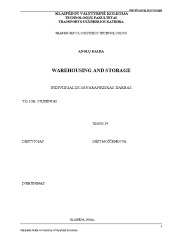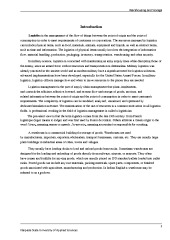Warehousing And Storage



Warehousing and storage.
Later, as railway tracks were built and began to facilitate greater amounts of cross-country travel, rail warehouses were also established. And, as transportation and urbanisation continued to progress, more depots were built in more convenient locations – areas that were closer to the intended use of the products being stored.
In years gone by, warehouses were used to store imported foods, such as corn, as well as alcohol, valuable commodities and various other materials. In America, commercial warehousing experienced a significant growth spurt when, at the turn of the 20th century, the government placed restrictions on the operations of the railroads – a result of clashes with the American Warehouseman’s Association, who challenged their control of freight depots. Around the mid-20th century, warehousing underwent something of a metamorphosis, thanks to the rise of mass production and machine-operated factories. More products called for more storage facilities, and more efficient, effective means of storing and retrieving products. Once again, the demand for warehousing rose.
Cold storage is another widely used type of warehousing, and is required for the preservation of agricultural products and other perishable and semi-perishable goods. The location of these depots is critical to their success, as they need to be positioned within close proximity of a growing region and a lucrative market, have an uninterrupted power supply, and provide easy access for heavy vehicles.
So, while warehouses were once used solely as storage depots for products, these days they often have other functions too, and as such may be known as third party logistics providers (3PLs). In addition to storing pallets, warehouses may now also offer light manufacturing of goods, and they may have call centres, labelling facilities and other stock-related uses. Another fairly recent trend is the emergence of warehouse-style retail stores, where large amounts of products are stored on industrial racks, rather than on conventional retail-type shelving. Customers are able to buy products in bulk, and stock that is ready to be sold is generally placed on bottom racks. Meanwhile, crated inventory, or inventory that has been placed in pallets, is stored higher up, and lowered when required. In this way, these buildings function as both warehouses and retail stores.

















